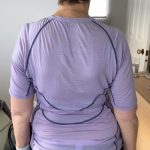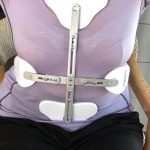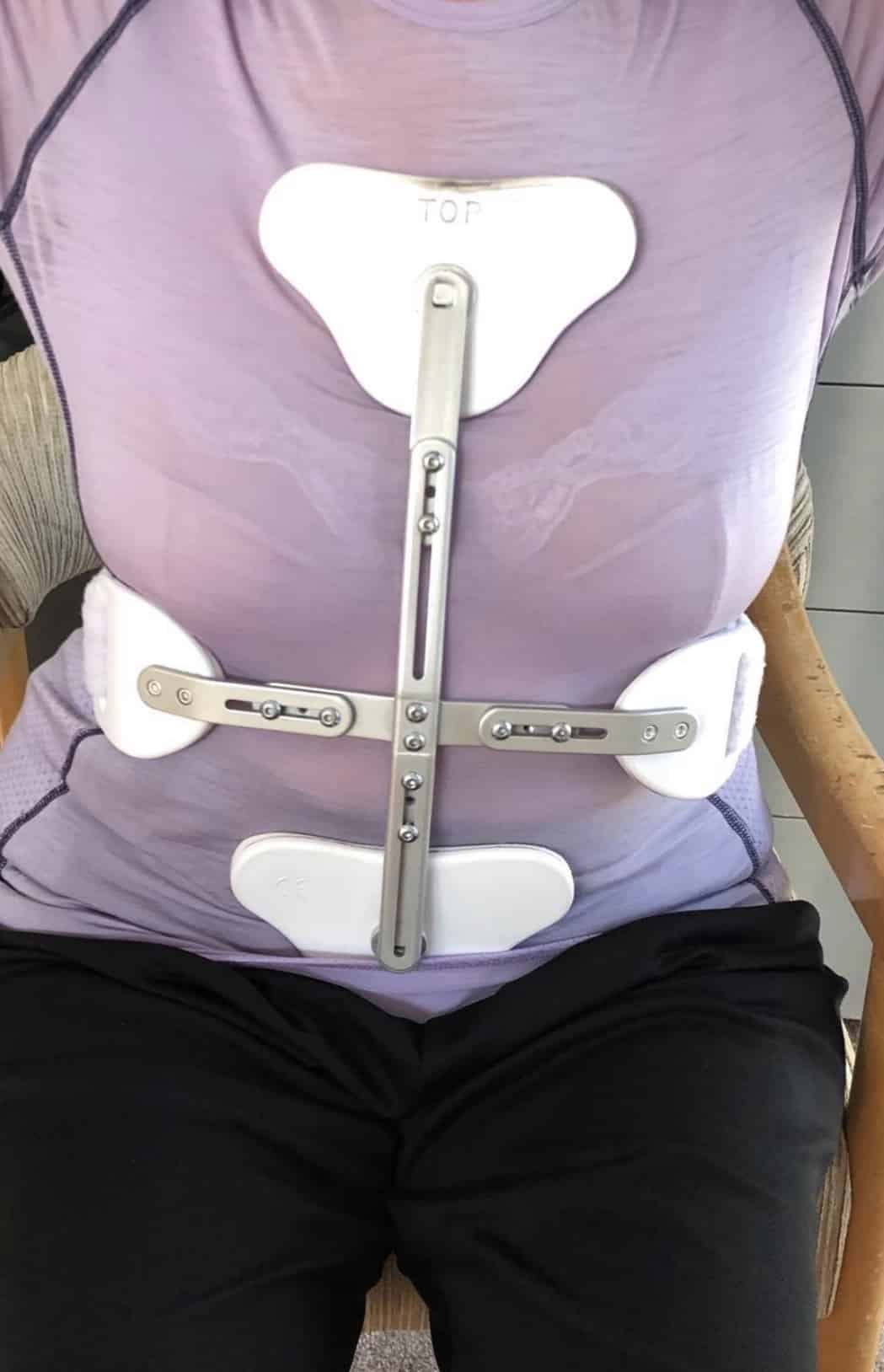Customized Exercise Programming - Primary Bone Cancer w/Lung METS





Jane received a referral for a new client with bone cancer that has spread to her lungs. She is a recent CES graduate and was looking for assistance in putting together a safe and effective exercise program for her client. Together as a group, the CETI University students and I came up with the following program.
FACTS –
Client is in her 60’s – menopause
She is somewhat active, riding her bike several times per week.
May 2019 found tumor in T12 and underwent radiation (disc collapsed)
Currently taking oral chemo for lung tumors
Experiences shortness of breath & fatigue
vertical abdominal incision from abdominal surgery in 2001
Wears prescribed back brace daily to manage pain
Swelling in right ankle
Postural Assessment:
- Severe shoulder protraction
- Head tilts to right
- Forward head
- Mod. winged scapula on left severe on right
- Moderate lordosis
- Elevated right hip and shoulder
- Left knee higher than right
Modified Thomas Test showed no distortion therefore, rule out tight hip flexors/weak glutes as primary cause for lordosis. More likely to be core weakness and low back tightness.
Squat Test showed her arms falling forward and head migrating forward. Everything else was in alignment. This indicates tight Pecs and Lats and weak middle/lower Traps, rhomboids, and rotator cuff.
We know that she is at risk for lower extremity lymphedema because of the radiation to her mid/lower back. She should have baseline measurements taken at all of the recommended locations for the lower body. She should be given a handout about ways to prevent lymphedema and also told about pitting edema. Her body composition is a concern because the excess adipose tissue can retain fluid and impede the flow of lymph. It is also a concern because it increases her risk for future cancers, heart disease, and diabetes. She should be referred to a registered dietician or nutritionist who specialized in oncology for a structured meal plan. Do not make food recommendations unless you maintain those credentials.
She needs to also do aerobic training to help strengthen her heart and lungs. There may be damage now or in the future from radiation and because of the lung METS, she struggles with breathlessness. The goal for her would be to do 150 min. of moderate intensity aerobic exercise per week, but this depends on variables such as fatigue, breathlessness, and pain. I would begin with a 5-10 min aerobic warm-up on a recumbent bike. Although she has been using a standard road bike, it puts too much pressure on her spine and encourages forward hip flexion and forward head. If her immune system is not compromised, I would have her do the bulk of her aerobic training in the pool. She can join a class or just do water walking/jogging or lap swimming. The hydrostatic pressure will help to minimize swelling. She should see her doctor about the existing swelling in her ankle and rule-out lymphedema. In either case she will do a combination of upper/lower extremity lymph drainage exercises that will not only open up the lymphatic pathways and promote lymphatic drainage, they will address tightness in the upper Traps and Levators and weakness in the rhomboids.
Because the lymphatic drainage exercises begin with crunches and pelvic tilts to minimize pooling in the abdomen, we will come up with an alternative for her. We want to avoid spinal flexion and extension. Start with deep belly breathing then moves on in the order the exercises are laid out.
While she does not state that she has neuropathy, she must work on balance. This will help minimize her risk of falling and injury. Because her doctor prescribed a brace, she MUST wear it during exercise. Do not train her without it! Start with very simple balance exercise and progress from there. You might have her stand on one foot while holding on to something for starters. If she can do that with no problems/no pain, try to do it without having her hold on. From there you can move on to slight instability using Airex balance pads. Make sure that she has a spotter or something to hold on to. I would be very cautious if moving on to something like the BOSU(R) Balance Trainer unless someone is there with her to hold her hands and make sure that she does not fall!
Because of her fatigue, and just getting started with a program, I would keep the workout to 20-30 min. with a goal of 3-4 times per week. This leaves us with about ten more minutes to address the remainder of her issues. If she is not wanting to do anything else, finish with some deep breathing and gentle stretching. Alternatively, add some supine ceiling punches or another exercise to strengthen her serratus muscles. I would have her sit in front of a table and have each arm (independently) slide into flexion to stretch the lats. Next I would change her positioning so that she can do the same thing with abduction. I would have her finish off with some scapular stabilization exercises such as shoulder retractions and isolate movements.
Over the next 24-36 hours she should monitor for any swelling or additional swelling. If there are any noticeable changes, she should see her doctor to rule out lymphdema. If she is already diagnosed with lymphedema, you need to sacle-bak her workout with less intensity and resistance. Remember that repetitive motion such as bike riding, running, walking, etc. increase the flow of lymph and can increase the risk of lymphedema for some people. If the doctor prescribes compression garments she MUST wear them to exercise. Do not train her without them!
Keep things simple and free of distractions as she may have difficulty concentrating. If she does get a cut, scratch, or bite, make sure she washes it with soap and water, uses and antibacterial, and covers with a bandage. Over the next day or so she should watch for redness and/or swelling and report to doctor immediately if this happens.
As her endurance increases and her fatigue decreases you can start to add more reps, resistance, and workout time. I would gradually add exercises that will stretch the chest and strengthen the back muscles. Think of exercises like a chest fly or barrel hug with an isometric back contraction at the end of motion. Focus on teaching her proper form and helping her with her kinesthetic awareness.
The obvious postural distortions are due to scoliosis and may not benefit from strengthening/stretching program, however, I would gradually add QL stretches, a ton of core work, and glute med exercises such as Clams. Do not wrap a band around her legs as it may restrict the lymphatic flow. The same applies to foam rolling.
Keep the focus on functional exercise when choosing your strength training exercises. What does she need/want to do on a given day that she needs strength for?
Re-evaluate after 8-12 weeks and if everything is progressing nicely, you can begin to add more challenges.


